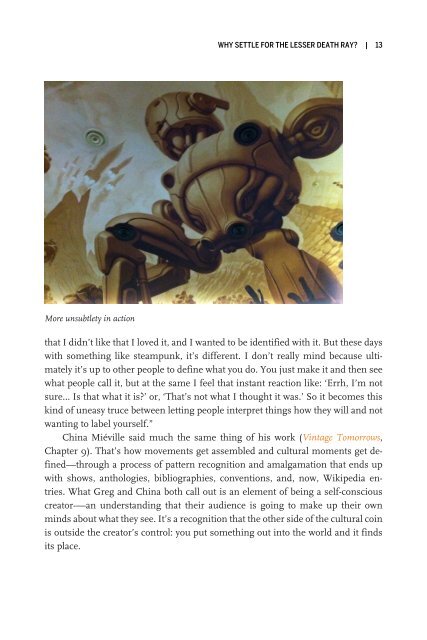Steampunking Our Future: An Embedded ... - cdn.oreilly.com
Steampunking Our Future: An Embedded ... - cdn.oreilly.com
Steampunking Our Future: An Embedded ... - cdn.oreilly.com
Create successful ePaper yourself
Turn your PDF publications into a flip-book with our unique Google optimized e-Paper software.
More unsubtlety in action<br />
WHY SETTLE FOR THE LESSER DEATH RAY? | 13<br />
that I didn’t like that I loved it, and I wanted to be identified with it. But these days<br />
with something like steampunk, it’s different. I don’t really mind because ultimately<br />
it’s up to other people to define what you do. You just make it and then see<br />
what people call it, but at the same I feel that instant reaction like: ‘Errh, I’m not<br />
sure… Is that what it is?’ or, ‘That’s not what I thought it was.’ So it be<strong>com</strong>es this<br />
kind of uneasy truce between letting people interpret things how they will and not<br />
wanting to label yourself.”<br />
China Miéville said much the same thing of his work (Vintage Tomorrows,<br />
Chapter 9). That’s how movements get assembled and cultural moments get defined—through<br />
a process of pattern recognition and amalgamation that ends up<br />
with shows, anthologies, bibliographies, conventions, and, now, Wikipedia entries.<br />
What Greg and China both call out is an element of being a self-conscious<br />
creator-—an understanding that their audience is going to make up their own<br />
minds about what they see. It’s a recognition that the other side of the cultural coin<br />
is outside the creator’s control: you put something out into the world and it finds<br />
its place.

















